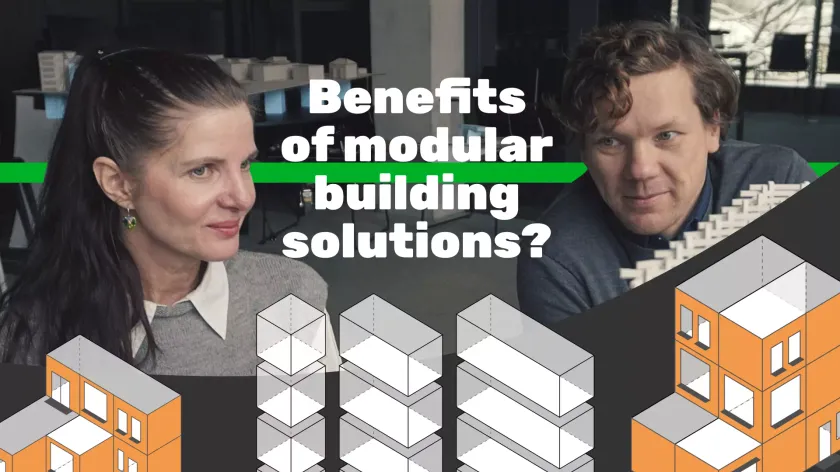The Era of Modular Building

Modular – defined in the dictionary as “employing or involving a module or modules as the basis of design or construction”.
The world is continually evolving to accommodate the need for instant solutions, fast paced living, demand for efficiency and lower costs, along with an eye on sustainability and a greener future. The construction sector is no exception. We have seen the advent of modular construction in the building industry increase solidly over the last number of years, and there is a good reason.
Modular buildings are interim or permanent structures that have been constructed using off-site manufactured, prefabricated units called modules. Hence the terms modular construction and modular buildings.
There are vast benefits to using modular building solutions – their “instant useability” or “ready-to-use” being one of the main attractions.
Typically, modules for modular construction projects are fully fitted with all electrics, plumbing, heating and internal finishes before they reach the construction site to become full modular buildings. That’s why modular construction is such a fast and efficient solution – it offers both speed and certainty in the demanding consumer marketplace.
Comparing Modular Construction to traditional building methods, a reduction in time of up to 50%* can be achieved because groundworks and foundations are created while the modules are manufactured offsite. Again, this is catering for a fast turnaround time for project completion.
Agility and flexibility are another two keywords that can be used to describe Modular Building. Modular buildings can be easily expanded, reduced, reconfigured or relocated to meet the changing needs of industry and society.
There is a positive impact on safety and the environment with up to 90% less vehicle movements*, due to the speed in modular buildings being installed in a matter of days. It reduces traffic on the building site and allows usual construction operations to be carried out with no interruptions. Off-site construction generates up to 90% less waste* than traditional on-site building methods. The factory-controlled process of leading manufacturers also minimizes the amount of energy necessary to create a building. Shorter time for construction, requires less energy and lower level of onsite pollution. Less daily traffic and machinery are required. There are lower levels of noise pollution. There is a large increase in recycling materials often discarded as waste on-site.
In fact, Modular buildings are kind to the environment – they are built with eco-friendly building materials and are leading the market with the use of recycled materials.
Reliability and certainty are a given with Modular Construction. It is not subject to the same weather related delays or skill shortages as site-based construction. Once the modules are in place the building can be ready for occupation.
There are two main structural materials used in any type of modular construction:
- Standard, wood-frame (Type V-B) construction (built with standard lumber)
- Steel and concrete (Type II-B non-combustible) construction
Both types of structures have vast adaptability and can cater for bespoke needs.
The main sectors of application of modular construction are:
- Private housing
- Social housing
- Apartments and mixed-use buildings
- Educational sector and student residences
- Key worker accommodation and sheltered housing
- Public sector buildings, such as prisons and MoD buildings
- Health sector buildings
- Hotels
With a healthy mix of penetration across residential and commercial markets, modular constructions are very cost-effective, not alone are the materials less expensive because of their recyclability, but there are usually flexible payment options throughout the construction process for the end user. With a shorter construction time and less labour required, it equally reduces costs and makes it a favourable economic option.
Often, the design service is also included in the overall project price, however it’s important to note that because of the increasing need for Modular Construction, in turn there is also an increase in demand for aligned design technology also.
One such expert in this space is Creatomus.
Creatomus is an Estonian based Housing Configuration Company with Tech at the core of its offering. Their online application in 3D allows the end user to customize their future home, while keeping updated about the performance indication and the cost of building. Creatomus developed its first house configurator in 2015 at the Greentech Hackathon. Now, 6 years later, they have established a solid online platform and delivered house configurators in a wide variety of geographical locations, such as the UK, US and across the EU. Their housing configurator software is especially prominent in the Modular Building industry. With the need for speed, flexibility, innovation and agility, Creatomus is bucking the trend within this Construction Tech space and their CEO Renee Puusepp has said
The beauty of our Tech offering is we can work across a huge geographical area in real-time in a virtual environment. Now more than ever, this innovation is so important and helps to foster a contactless environment that saves time and money, all the while driving an innovative solution that works for Architects, Developers, Construction Companies and the end buyer, with emphasis on the Modular Building Market.
The outlook for Modular Construction is a continued trend upwards, coupled with a more robust and lucrative construction industry and Disruptor Tech companies providing the right Design Software and processes, it will no doubt see the modular building industry becoming a mainstream anchor and a first choice for businesses and residential buyers.
* Source: MTECH & Wrap 2021